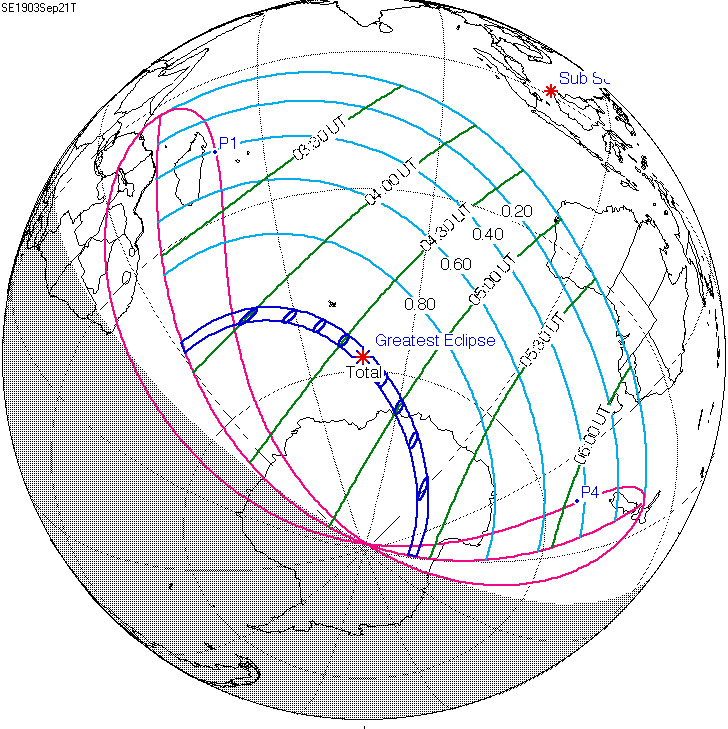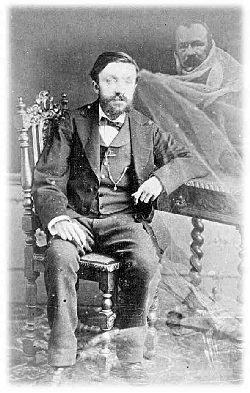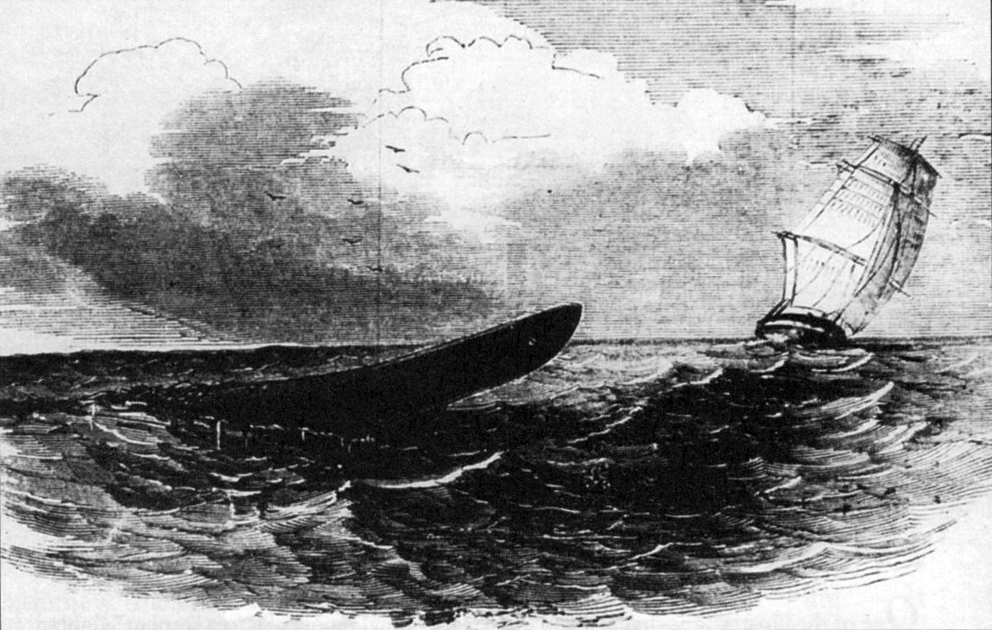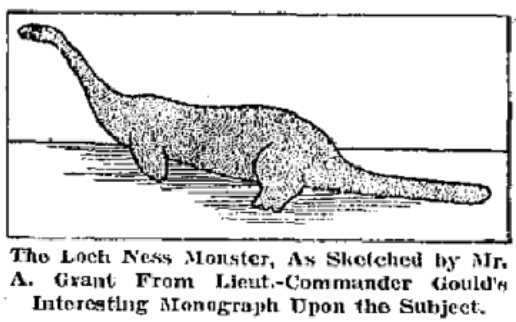|
Arthur C. Clarke's Mysterious World
''Arthur C. Clarke's Mysterious World'' is a thirteen-part British television series looking at unexplained phenomena from around the world. It was produced by Yorkshire Television for the ITV network and first broadcast on 6 September 1980. Each program is introduced and book-ended by science fiction writer Arthur C. Clarke in short sequences filmed in Sri Lanka. The bulk of the episodes are narrated by Gordon Honeycombe. The series was produced by John Fanshawe and John Fairley, and directed by Peter Jones, Michael Weigall and Charles Flynn. It also featured a unique soundtrack composed by British artist Alan Hawkshaw. In 1980, Book Club Associates published a hardcover book with the same name, authored by Simon Welfare and John Fairley, where the contents of the show were further explored. It featured an introduction written by Clarke as well as his remarks at the end of each chapter or topic. In 1985, a paperback of this book was released by HarperCollins Publishers. ... [...More Info...] [...Related Items...] OR: [Wikipedia] [Google] [Baidu] |
Documentary Television
Television documentaries are televised media productions that screen documentaries. Television documentaries exist either as a television documentary series or as a television documentary film. *Television documentary series, sometimes called docuseries, are television series screened within an ordered collection of two or more televised episodes. *Television documentary films exist as a singular documentary film to be broadcast via a documentary channel or a News_broadcasting, news-related channel. Occasionally, documentary films that were initially intended for televised broadcasting may be screened in a Movie theater, cinema. Documentary television rose to prominence during the 1940s, spawning from earlier cinematic documentary filmmaking ventures. Early production techniques were highly inefficient compared to modern recording methods. Early television documentaries typically featured historical, wartime, investigative or event-related subject matter. Contemporary televisio ... [...More Info...] [...Related Items...] OR: [Wikipedia] [Google] [Baidu] |
Solar Eclipse Of February 16, 1980
A total solar eclipse occurred at the Moon's descending node of the orbit on February 16, 1980. A solar eclipse occurs when the Moon passes between Earth and the Sun, thereby totally or partly obscuring the image of the Sun for a viewer on Earth. A total solar eclipse occurs when the Moon's apparent diameter is larger than the Sun's, blocking all direct sunlight, turning day into darkness. Totality occurs in a narrow path across Earth's surface, with the partial solar eclipse visible over a surrounding region thousands of kilometres wide. The path of totality crossed central Africa, southern India, and into China at sunset. The southern part of Mount Kilimanjaro Mount Kilimanjaro () is a dormant volcano in Tanzania. It has three volcanic cones: Kibo, Mawenzi, and Shira. It is the highest mountain in Africa and the highest free-standing mountain above sea level in the world: above sea level and ab ..., the highest mountain in Africa, also lies in the path of totality. Occu ... [...More Info...] [...Related Items...] OR: [Wikipedia] [Google] [Baidu] |
Parapsychology
Parapsychology is the study of alleged psychic phenomena (extrasensory perception, telepathy, precognition, clairvoyance, psychokinesis (also called telekinesis), and psychometry) and other paranormal claims, for example, those related to near-death experiences, synchronicity, apparitional experiences, etc. Criticized as being a pseudoscience, the majority of mainstream scientists reject it. Parapsychology has also been criticised by mainstream critics for many of its practitioners claiming that their studies are plausible in spite of there being no convincing evidence for the existence of any psychic phenomena after more than a century of research. Parapsychology research rarely appears in mainstream scientific journals; instead, most papers about parapsychology are published in a small number of niche journals. Terminology The term ''parapsychology'' was coined in 1889 by philosopher Max Dessoir as the German . It was adopted by J. B. Rhine in the 1930s as a replacement fo ... [...More Info...] [...Related Items...] OR: [Wikipedia] [Google] [Baidu] |
Sigiriya
Sigiriya or Sinhagiri (''Lion Rock'' si, සීගිරිය, ta, சிகிரியா/சிங்ககிரி, pronounced see-gi-ri-yə) is an ancient rock fortress located in the northern Matale District near the town of Dambulla in the Central Province, Sri Lanka. It is a site of historical and archaeological significance that is dominated by a massive column of rock approximately high. According to the ancient Sri Lankan chronicle the '' Cūḷavaṃsa'', this area was a large forest, then after storms and landslides it became a hill and was selected by King Kashyapa (AD 477–495) for his new capital. He built his palace on top of this rock and decorated its sides with colourful frescoes. On a small plateau about halfway up the side of this rock he built a gateway in the form of an enormous lion. The name of this place is derived from this structure; ''Sīnhāgiri'', the Lion Rock (an etymology similar to ''Sinhapura'', the Sanskrit name of Singapore, the Lio ... [...More Info...] [...Related Items...] OR: [Wikipedia] [Google] [Baidu] |
Cerne Abbas Giant
The Cerne Abbas Giant is a hill figure near the village of Cerne Abbas in Dorset, England. high, it depicts a standing nude male with a prominent erection and wielding a large club in its right hand. Like many other hill figures it is outlined by shallow trenches cut in the turf and backfilled with chalk rubble. It is listed as a scheduled monument of England; the site is now owned by the National Trust. The origin and age of the figure are unclear and there is archaeological evidence that parts of it have been lost, altered or added over time; the earliest written record dates to the late 17th century. Early antiquarians associated it, on little evidence, with a Saxon deity, while other scholars sought to identify it with a Romano-British figure of Hercules or some syncretisation of the two. The lack of earlier descriptions, along with information given to the 18th-century antiquarian John Hutchins, has led some scholars to conclude it dates from the 17th century, but rece ... [...More Info...] [...Related Items...] OR: [Wikipedia] [Google] [Baidu] |
Stonehenge
Stonehenge is a prehistoric monument on Salisbury Plain in Wiltshire, England, west of Amesbury. It consists of an outer ring of vertical sarsen standing stones, each around high, wide, and weighing around 25 tons, topped by connecting horizontal lintel stones. Inside is a ring of smaller bluestones. Inside these are free-standing trilithons, two bulkier vertical sarsens joined by one lintel. The whole monument, now ruinous, is aligned towards the sunrise on the summer solstice. The stones are set within earthworks in the middle of the densest complex of Neolithic and Bronze Age monuments in England, including several hundred ''tumuli'' (burial mounds). Archaeologists believe that Stonehenge was constructed from around 3000 BC to 2000 BC. The surrounding circular earth bank and ditch, which constitute the earliest phase of the monument, have been dated to about 3100 BC. Radiocarbon dating suggests that the first bluestones were raised between 2400 and 2200 BC, althou ... [...More Info...] [...Related Items...] OR: [Wikipedia] [Google] [Baidu] |
Vitrified Fort
Vitrified forts are stone enclosures whose walls have been subjected to vitrification through heat. It was long thought that these structures were unique to Scotland, but they have since been identified in several other parts of western and northern Europe. Vitrified forts are generally situated on hills offering strong defensive positions. Their form seems to have been determined by the contour of the flat summits which they enclose. The walls vary in size, a few being upwards of high, and are so broad that they present the appearance of embankments. Weak parts of the defence are strengthened by double or triple walls, and occasionally vast lines of ramparts, composed of large blocks of unhewn and unvitrified stones, envelop the vitrified centre at some distance from it. The walls themselves are termed vitrified ramparts. No lime or cement has been found in any of these structures, all of them presenting the peculiarity of being more or less consolidated by the fusion of the ro ... [...More Info...] [...Related Items...] OR: [Wikipedia] [Google] [Baidu] |
Baghdad Battery
The Baghdad Battery is the name given to a set of three artifacts which were found together: a ceramic pot, a tube of copper, and a rod of iron. It was discovered in present-day Khujut Rabu, Iraq in 1936, close to the metropolis of Ctesiphon, the capital of the Parthian (150 BC – 223 AD) and Sasanian (224–650 AD) empires, and it is believed to date from either of these periods. Its origin and purpose remain unclear. It was hypothesized by Wilhelm König, at the time director of the National Museum of Iraq, that the object functioned as a galvanic cell, possibly used for electroplating, or some kind of electrotherapy, but there is no electroplated object known from this period, and the claims are near universally rejected by archaeologists. An alternative explanation is that it functioned as a storage vessel for sacred scrolls. Physical description and dating The artifacts consist of a terracotta pot approximately tall, with a mouth, containing a cylinder made of a rolled ... [...More Info...] [...Related Items...] OR: [Wikipedia] [Google] [Baidu] |
Stone Spheres Of Costa Rica
The stone spheres of Costa Rica are an assortment of over 300 petrospheres in Costa Rica, on the Diquís Delta and on Isla del Caño. Locally, they are also known as bolas de piedra (literally stone balls). The spheres are commonly attributed to the extinct Diquís culture, and they are sometimes referred to as the Diquís Spheres. They are the best-known stone sculptures of the Isthmo-Colombian area. They are thought to have been placed in lines along the approach to the houses of chiefs, but their exact significance remains uncertain. The Palmar Sur Archaeological Excavations are a series of excavations of a site located in the southern portion of the country, known as the Diquís Delta, and have centered on a site known as "Finca 6" (Farm 6). The archaeological findings date back to the Aguas Buenas Period (300–800 CE) and Chiriquí Period (800–1550 CE). In June 2014, the Precolumbian Chiefdom Settlements with Stone Spheres of the Diquís was added to the UNESCO list ... [...More Info...] [...Related Items...] OR: [Wikipedia] [Google] [Baidu] |
Sea Serpent
A sea serpent or sea dragon is a type of dragon sea monster described in various mythologies, most notably Mesopotamian (Tiamat), Judaeo-Christian (Leviathan), Greek (Cetus, Echidna, Hydra, Scylla), and Norse (Jörmungandr). Mythology and folklore Mediterranean and Western Asia The mytheme, the chief god in the role of the hero slaying a sea serpent, is widespread both in the ancient Near East and in Indo-European mythology, e.g. Lotan and Hadad, Leviathan and Yahweh, Tiamat and Marduk (see also Labbu, Bašmu, Mušḫuššu), Illuyanka and Tarhunt, Yammu and Baal in the Baal Cycle etc. The Hebrew Bible also has less mythological descriptions of large sea creatures as part of creation under God's command, such as the Tanninim mentioned in Book of Genesis 1:21 and the "great serpent" of Amos 9:3. In the Aeneid, a pair of sea serpents killed Laocoön and his sons when Laocoön argued against bringing the Trojan Horse into Troy. In antiquity and in the Bible, dragons were envi ... [...More Info...] [...Related Items...] OR: [Wikipedia] [Google] [Baidu] |
Remy Van Lierde
Colonel Remy Van Lierde, (14 August 1915 – 8 June 1990) was a Belgian pilot and fighter ace who served in the aviation branch of the Belgian Army and the British Royal Air Force (RAF) during the Second World War, shooting down six enemy aircraft and 44 V-1 flying bombs, and achieving the RAF rank of squadron leader. Returning to the Belgian Air Force in 1946, Van Lierde was made Deputy Chief of Staff to the Minister of Defense in 1954. In 1958 he became one of the first Belgians to break the sound barrier while test flying a Hawker Hunter at Dunsfold Aerodrome in England. He went on to hold several important commands before retiring in 1968. Early life Van Lierde was born in Overboelare, Belgium, on 14 August 1915. Early career and outbreak of war Van Lierde entered the ''Aviation Militaire Belge'' ("Belgian Military Aviation", the predecessor of the Belgian Air Force) on 16 September 1935. He first trained as an observer, but began pilot training on 1 May 1937, qualify ... [...More Info...] [...Related Items...] OR: [Wikipedia] [Google] [Baidu] |
Loch Ness Monster
The Loch Ness Monster ( gd, Uilebheist Loch Nis), affectionately known as Nessie, is a creature in Scottish folklore that is said to inhabit Loch Ness in the Scottish Highlands. It is often described as large, long-necked, and with one or more humps protruding from the water. Popular interest and belief in the creature has varied since it was brought to worldwide attention in 1933. Evidence of its existence is anecdotal, with a number of disputed photographs and sonar readings. The scientific community explains alleged sightings of the Loch Ness Monster as hoaxes, wishful thinking, and the misidentification of mundane objects. The pseudoscience and subculture of cryptozoology has placed particular emphasis on the creature. Origin of the name In August 1933, the ''Courier'' published the account of George Spicer's alleged sighting. Public interest skyrocketed, with countless letters being sent in detailing different sightingsR. Binns ''The Loch Ness Mystery Solved'' pp 1 ... [...More Info...] [...Related Items...] OR: [Wikipedia] [Google] [Baidu] |



.jpg)





